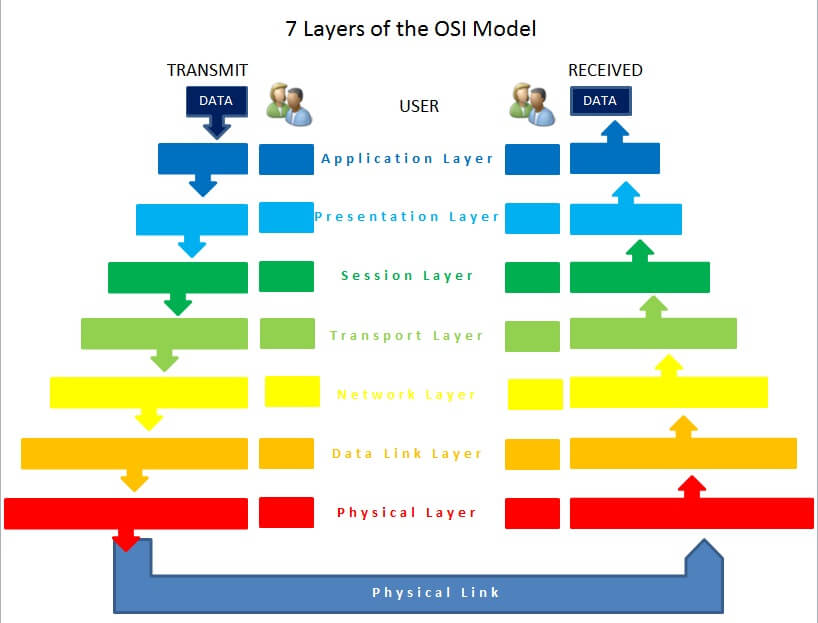OSI Model
The International Standards Organization (ISO) developed the Open Systems Interconnection (OSI) model. It conceptually divides computer network architecture into 7 layers in a logical progression. The lower layers deal with electrical signals, chunks of binary data, and routing of these data across networks. Higher levels cover network requests and responses, representation of data, and network protocols as seen from a user's point of view.

Data Link Layer
Layer two is responsible for the logical organization and management of communications sent over that link, such as the location, arrangement and meaning of bits in a frame. It handles the data moving in and out across the physical layer. It also provides a well defined service to the network layer. Data link layer is divided into two sub layers. The Media Access Control (MAC) and Logical Link Control (LLC).
Data-Link layer ensures that an initial connection has been set up, divides output data into data frames, and handles the acknowledgements from a receiver that the data arrived successfully. It also ensures that incoming data has been received successfully by analyzing bit patterns at special places in the frames.
The three main functions of the data link layer are to deal with transmission errors, regulate the flow of data, and provide a well-defined interface to the network layer. When it transfers the data to the network layer, it uses timers and sequence numbers to check for errors to ensure that all data is successfully received. The data link layer has different services and protocols to complete its tasks. The protocols are the rules required to pass data successfully to the next layer. These activities can be summarized into three major functions: link management, flow control and error control.
Error Control
Network is responsible for transmission of data from one device to another device. The end to end transfer of data from a transmitting application to a receiving application involves many steps, each subject to error.
Error control describes procedures used to handle frames that have errors, including how to check a frame for errors, what to do when errors are discovered.
It allows the receiver to inform te sender if a frame is lost or damanaged during transmission and coordinates the retransmission of those frames by the sender.
Error control in the data link layer is based on automatic repeat request (ARQ). Whenever an error is detected, specified frames are transmitted.
There are 3 types of error control mechanisms: